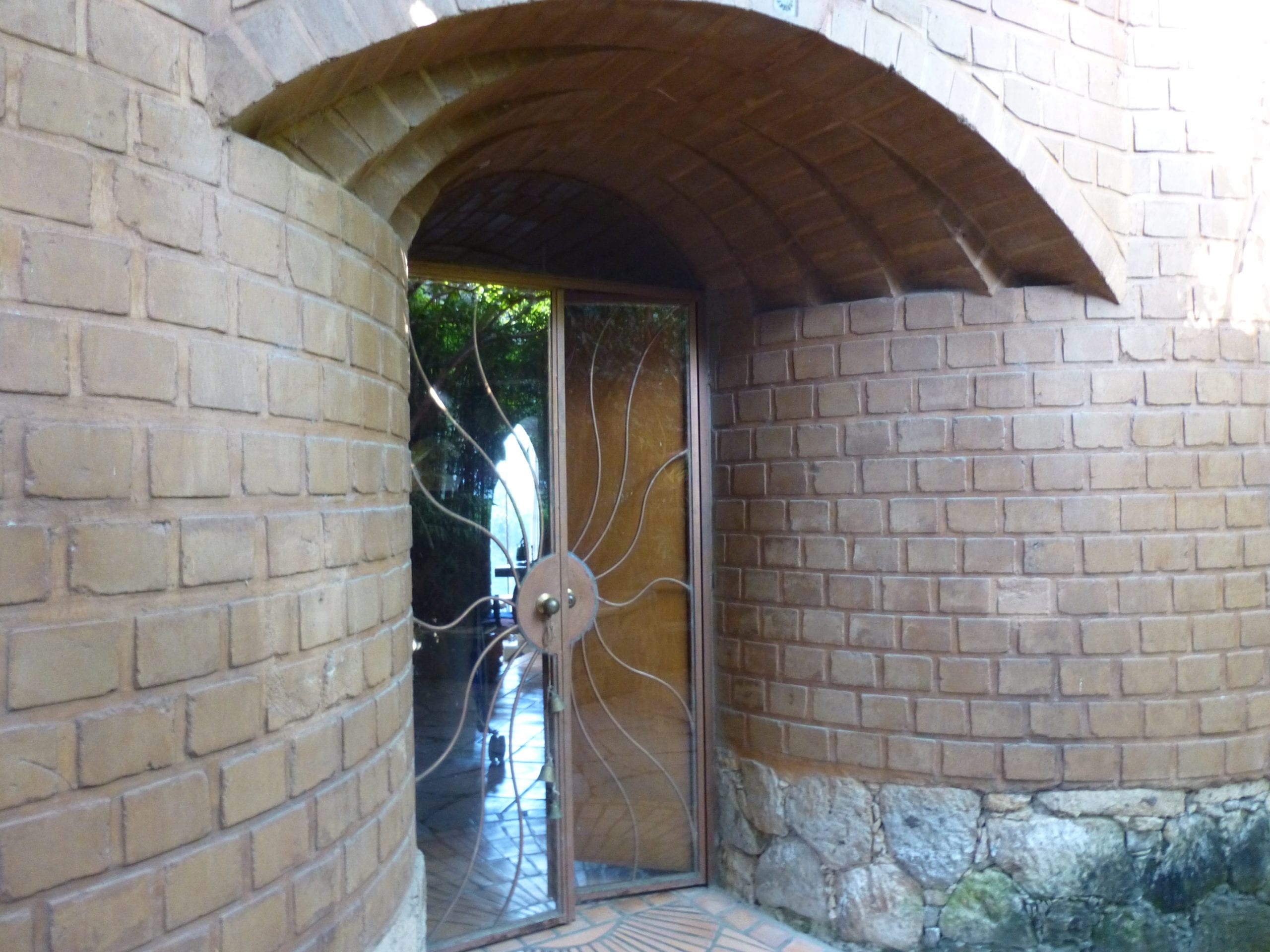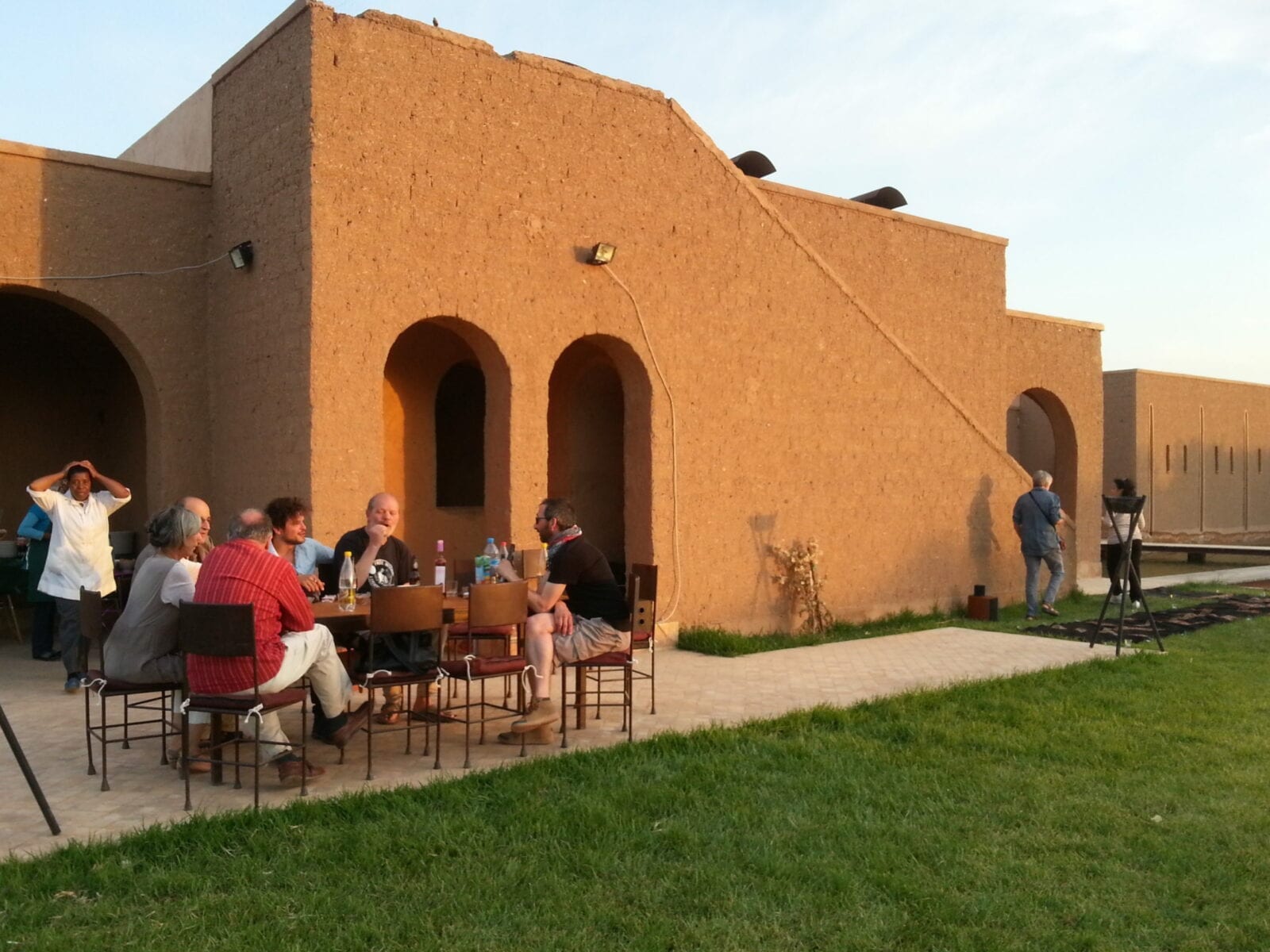Adobe Clay Bricks
Clay construction technique
A clay brick (Adobe) is an air-dried cube made of clay, sand and gravel, which is shaped by hands or pressed into a shape with a vibration press. Sand is added to vat clay and sometimes fiber-containing substances such as straw or animal faeces from herbivores such as camel, bovine and horse are added. Vegetable fibers reduce weight, improve thermal insulation and provide tensile strength, reducing cracking during drying. In heavy rain, the clay bricks become soft again, clay walls must be protected against permanent wetness and rain. When burned, a clay brick becomes a brick or clinker.
In English-speaking countries, construction methods using raw bricks are often referred to by the Spanish term Adobe, which is derived from the Arabic word “tôbe” = brick. The term was spread through Spanish descriptions of pre-Columbian buildings in Central and South America. The Sun Pyramid at Teotihuacán, the Huaca del Sol and the Huaca Larga in Peru are the largest adobe buildings in the world.
Clay is used to make the mud bricks, which are usually mixed with sand, vegetable fibers or other fillers. Too much sand reduces the load-bearing capacity of the stones, too much clay causes them to crack. The addition of dry or soaked straw (as is customary in Egypt) should also be sensible. The carefully kneaded, viscous clay mixture is traditionally pressed into rectangular wooden moulds, nowadays often also in metal moulds. Once the mass has hardened, the frame is removed from the mold. Bricks with a high clay content are usually stored in the shade before drying, as too rapid evaporation of water can cause cracking. In parts of Latin America and Mesopotamia, the blanks are also exposed to direct sunlight to dry.
Clay bricks Tierrafino are sensitive to running water and strong moisture (not to increased humidity). Thanks to their good heat storage, they offer advantages over many other building materials in dry, warm regions such as Egypt, Iran, Yemen or Bolivia, despite the mediocre thermal insulation. The stones heat up during the day and slowly release the stored heat to the environment at night.
This means that a building made of mud bricks stays cool during the day and warm at night.
In areas with strong solar radiation, buildings on the sunny side are fitted with a thicker wall in order to store as much energy as possible. To increase the heat storage of the wall, glass or translucent insulating material is placed in front of the wall at northern latitudes to keep the heat in the component (the short-wave light radiation is transmitted, but the long-wave heat radiation is delayed outwards)..
Also read about the other Loam Construction Techniques.
HALF TIMBERD CORD WOOD STRAW BALE
Especially for professionals, we offer the Technical Friday Morning. In 1.5 hours, we provide explanations about earthen construction in general and the technical applications of our clay products. There are no costs associated with attending our presentation.
register











